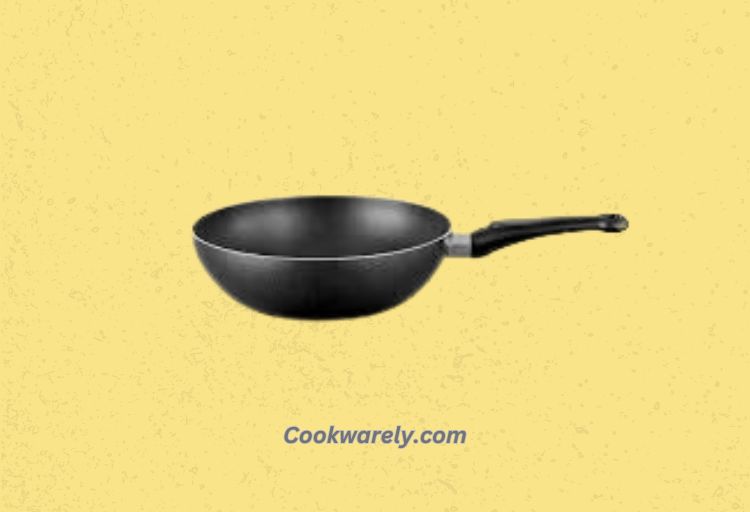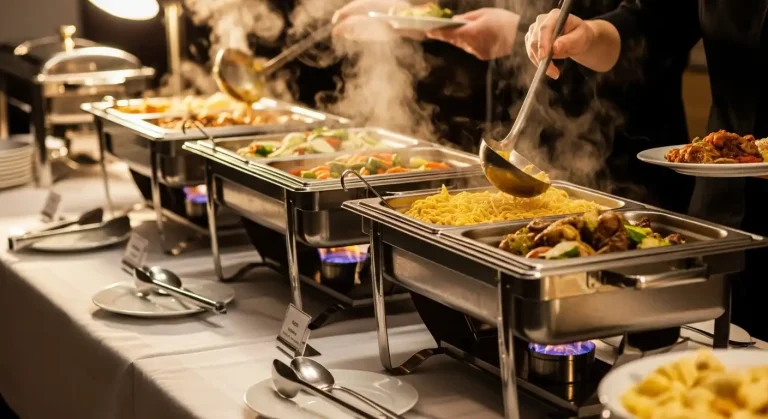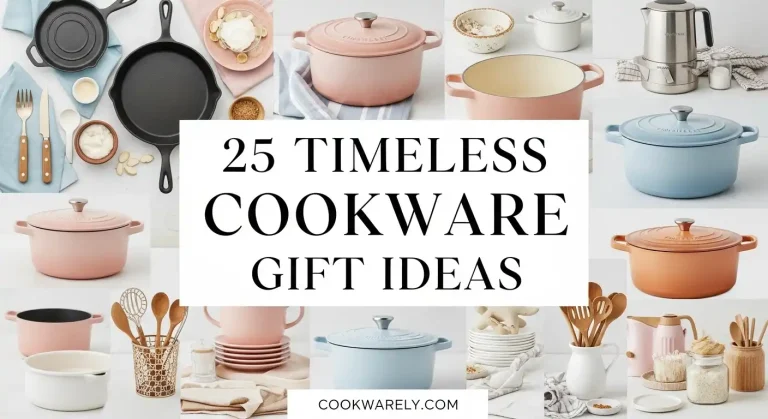Are Stainless Steel Pots Induction Ready? A Complete Guide

Induction cooking is gaining popularity for its efficiency and precision, but it comes with a specific requirement: cookware must be compatible with induction cooktops.
If you’re wondering, “Are stainless steel pots induction ready?” you’re in the right place.
This blog post will dive into the details of induction cooking, explain why some stainless steel pots work while others don’t, and offer tips to ensure your cookware performs perfectly.
With stainless steel being a kitchen favorite, understanding its compatibility with induction is key. Let’s explore the topic in depth to help you make informed choices.
🎄 Christmas & Year-End Amazon Deals !
Don’t miss out on the best discounts and top-rated products available right now!
*As an Amazon Associate, I earn from qualifying purchases.
How Induction Cooking Works
Induction cooktops use magnetic fields to heat cookware directly, unlike gas or electric stoves that heat the surface.
This technology requires pots and pans made of ferromagnetic materials, which can generate heat when exposed to the magnetic field.

Not all metals work with induction. For example, aluminum and copper won’t heat up, but certain types of stainless steel and cast iron do.
This brings us to the big question: Are stainless steel pots induction ready?
Are Stainless Steel Pots Induction Ready?
The answer depends on the specific type of stainless steel used in your cookware.
Stainless steel is an alloy, and its magnetic properties vary based on its composition. Let’s break it down.
Ferromagnetic vs. Non-Ferromagnetic Stainless Steel
Stainless steel pots made with ferromagnetic alloys, like 400-series stainless steel, are induction-ready.
These alloys contain enough iron to interact with the magnetic field of an induction cooktop.
Conversely, 300-series stainless steel, often used for its corrosion resistance, is typically non-ferromagnetic and won’t work on induction.
To learn more, check out does stainless steel work on induction cooktops?.
How to Test Induction Compatibility
Not sure if your stainless steel pot is induction-ready? Try the magnet test. Place a magnet on the base of your pot—if it sticks firmly, the pot is likely compatible.
If the magnet doesn’t stick, your pot won’t work on an induction cooktop. This simple test saves you from guesswork.
Why Choose Stainless Steel for Induction Cooking?
Stainless steel is durable, non-reactive, and versatile, making it a top choice for many cooks.
Its ability to handle high heat makes it perfect for searing and browning.
🎄 Christmas & Year-End Amazon Deals !
Don’t miss out on the best discounts and top-rated products available right now!
*As an Amazon Associate, I earn from qualifying purchases.
For induction users, stainless steel’s compatibility (when ferromagnetic) adds to its appeal.
Plus, it’s easy to maintain, though you’ll want to avoid issues like discoloration on stainless steel pots.
Features of Induction-Ready Stainless Steel Pots
When shopping for induction-compatible stainless steel pots, look for these key features:
Flat, Thick Base
A flat, thick base ensures maximum contact with the cooktop, improving efficiency.
Thin bases can warp over time, reducing performance.
Induction Symbol
Many manufacturers label their cookware with an induction-compatible symbol (a coiled spring or similar icon).
Check the packaging or product description to confirm.
High-Quality Materials
Pots with a magnetic stainless steel base or a multi-ply construction (combining stainless steel with an aluminum or copper core) offer excellent heat distribution.
This prevents issues like burning in stainless steel pans.
Comparing Stainless Steel to Other Induction-Compatible Materials
Stainless steel isn’t the only option for induction cooking. Let’s compare it to other materials.
Cast Iron
Cast iron is naturally induction-ready and retains heat well, making it ideal for slow cooking.
However, it’s heavier than stainless steel and requires seasoning. Learn more in cast iron Dutch oven vs. stainless steel pot.
🎄 Christmas & Year-End Amazon Deals !
Don’t miss out on the best discounts and top-rated products available right now!
*As an Amazon Associate, I earn from qualifying purchases.
Carbon Steel
Carbon steel is another induction-compatible material, often used in woks. It’s lighter than cast iron but may need seasoning.
Check out does carbon steel work on induction? for details.
Unlike carbon steel woks that turn black with use, stainless steel maintains its appearance with proper care.
Tips for Using Stainless Steel Pots on Induction Cooktops

To get the most out of your induction-ready stainless steel pots, follow these tips:
Preheat Properly
Induction cooktops heat up quickly, so preheat your pot on medium heat to avoid hot spots. This helps prevent issues like white spots on stainless steel pans.
Match Pot Size to Burner
Using a pot that’s too small or too large for the burner can lead to uneven heating.
Choose a pot that matches the burner’s diameter for optimal performance.
Use the Right Cooking Techniques
Stainless steel pots excel at high-heat tasks like searing. However, to avoid sticking, add oil after preheating and ensure the surface is hot before adding food.
Maintaining Induction-Ready Stainless Steel Pots
Proper care extends the life of your cookware and keeps it induction-ready. Here are some maintenance tips:
Clean Regularly
Avoid letting food residue build up, as it can affect heat distribution. Learn how to remove cloudy stainless steel pans for a spotless finish.
Avoid Dishwashers
While convenient, dishwashers can damage stainless steel over time. Hand-wash your pots to preserve their shine. Read more in can you put a stainless steel pot in a dishwasher?.
Check for Pitting
Pitting can compromise a pot’s surface and induction compatibility.
🎄 Christmas & Year-End Amazon Deals !
Don’t miss out on the best discounts and top-rated products available right now!
*As an Amazon Associate, I earn from qualifying purchases.
If you notice pitting, check are pitted stainless steel pots safe to use? to assess safety.
Restore Shine
To keep your pots looking new, use vinegar or a specialized cleaner.
For step-by-step guidance, see how to restore shine to stainless steel pots and pans.
Can You Season Stainless Steel Pots for Induction?
Unlike carbon steel woks, stainless steel pots don’t require seasoning.
However, applying a thin layer of oil can create a temporary non-stick surface, which is helpful for induction cooking.
This process isn’t the same as seasoning a stainless steel wok, which may benefit from light seasoning for stir-frying.
Are Old Stainless Steel Pots Induction-Ready?
If you have older stainless steel pots, their induction compatibility depends on their material.
Use the magnet test to confirm. For safety concerns, read are old stainless steel pots and pans safe to use?.
Older pots may also develop wear, like scratches or warping, which can affect induction performance. Inspect your cookware regularly.
Using Stainless Steel Pots Beyond Induction
Stainless steel’s versatility extends beyond induction cooktops. Many pots are oven-safe, making them great for recipes that start on the stovetop and finish in the oven.
Learn more in can you put stainless steel pots in the oven?.
You can also store food in stainless steel, though prolonged storage may cause reactions.
🎄 Christmas & Year-End Amazon Deals !
Don’t miss out on the best discounts and top-rated products available right now!
*As an Amazon Associate, I earn from qualifying purchases.
Check can you store food in stainless steel pots in a refrigerator? for guidance.
Choosing the Best Induction-Ready Stainless Steel Pots
When shopping, prioritize brands known for quality, like All-Clad or Le Creuset. Look for multi-ply construction, which combines stainless steel with conductive cores for even heating.
Check reviews and product specs to ensure induction compatibility. A good pot will last for years with proper care.
Common Myths About Stainless Steel and Induction
Myth: All Stainless Steel Is Induction-Ready
As mentioned, only ferromagnetic stainless steel works on induction. Always verify with the magnet test or product labeling.
Myth: Induction Cooking Damages Stainless Steel
Induction doesn’t harm stainless steel, but improper use, like overheating, can cause issues. Avoid problems by following proper cooking techniques.
Final Thoughts
Stainless steel pots can be a fantastic choice for induction cooking, provided they’re made of ferromagnetic materials.
By understanding your cookware’s compatibility and following best practices, you can enjoy efficient, precise cooking with ease.
Whether you’re searing, simmering, or sautéing, induction-ready stainless steel pots are versatile and durable.
With proper care, they’ll serve you well for years, making your kitchen adventures both successful and enjoyable.






